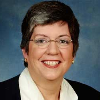Officials
Offical

Janet Napolitano’s career has been marked by high-profile appearances in situations of an especially challenging nature, and the Homeland Security chief’s decision to leave government in July 2013 to become president at the University of California (UC) wasn’t expect to break the pattern. She assumed her new duties in September 2013.
Napolitano is coming to a state with a large number of undocumented residents after presiding over the federal government’s aggressive deportation of illegal immigrants. That didn’t stop Republicans like Alabama Senator Jeff Sessions from telling the New York Times she exhibited a “consistent disrespect for the rule of law” and that her successor “must disavow these aggressive nonenforcement directives, or there is very little hope for successful immigration reform.” Napolitano has been a strong advocate for a pathway to citizenship.
Napolitano was born November 19, 1957, in New York City. She was raised in Pittsburgh, Pennsylvania, and Albuquerque, New Mexico, by Jane Marie Winer and Leonard Michael Napolitano. Her father was an anatomy professor and dean of the University of New Mexico School of Medicine. Napolitano graduated from Sandia High School in 1975 and was voted “Most Likely to Succeed.” She received a Bachelor of Science degree in political science in 1979 from Santa Clara University, where she was a Truman Scholar. She was valedictorian of her graduating class. Napolitano picked up a Juris Doctor from the University of Virginia School of Law in 1983.
After law school Napolitano clerked for Judge Mary M. Schroeder of the U.S. Court of Appeals for the Ninth Circuit in California, and then joined Schroeder’s former firm, Lewis and Roca, in Phoenix, Arizona. She made partner in 1989, and two years later was part of the legal team that represented Anita Hill, a former Equal Employment Opportunity Commission colleague of U.S. Supreme Court nominee Clarence Thomas who accused Thomas of sexual harassment. Hill’s accusations jeopardized, but ultimately failed to derail, the Senate’s confirmation of Thomas. Napolitano was in charge of preparing the testimony of Hill’s supporting witnesses.
President Bill Clinton appointed Napolitano, a Democrat, as U.S. Attorney for Arizona in 1993. While awaiting her confirmation by the Senate (which took a year because of Republican objections), she recused herself from a case against Cindy McCain, wife of U.S. Senator John McCain (R-AZ), who was charged with stealing prescription drugs from her medical charity.
Napolitano’s representation of Hill became an issue during her confirmation when she refused to answer questions about a private conversation with one of Hill’s witnesses, Susan Hoerchner, whom Republican critics contended changed her testimony at Napolitano’s urging.
She won confirmation and in the ensuing years forged a political alliance with the controversial sheriff of Maricopa County, Joe Arpaio, who became famous for subjecting inmates to chain gangs, rotten food and pink underwear. Napolitano was part of an investigation by the U.S. Department of Justice that looked into Arpaio’s methods of incarceration, but she downplayed the significance of the final report, which accused the sheriff’s operation of using excessive force, gratuitous use of pepper spray and “restraint chairs,” hog-tying and beating of inmates.
Napolitano ran for attorney general in the traditional Republican state of Arizona in 1998 and won. Her office put a heavy emphasis on consumer protection issues, but did not ignore law and order issues. She defended (unsuccessfully) Arizona’s right to issue death penalties in non-jury trials before the U.S. Supreme Court. While still serving as attorney general, she spoke at the Democratic National Convention in 2000, although she was still recovering from breast cancer and a mastectomy.
Napolitano’s Democratic Party star kept rising when she became governor of Arizona in 2002. She edged out former Republican Congressman Matt Salmon, giving Arizona (and the United States) the first ever back-to-back female governors of a state (she succeeded Republican Jane Dee Hull). Sheriff Arpaio endorsed her in the campaign and appeared in a television ad. Napolitano continued a hands-off policy towards the sheriff’s controversial ways while she served as governor.
As governor, Napolitano got into numerous fights with the Republican-controlled Legislature over state spending and illegal immigration. She also became a prominent figure in the debate over REAL ID, a federal program launched after the 2001 terrorist attacks to make driver’s licenses more secure. In 2007, Napolitano struck a deal with the Department of Homeland Security that was supposed to lead to her state adopting the REAL ID standards. But in June 2008, she signed legislation refusing to implement the standards. Furthermore, state auditors faulted Arizona’s use of federal homeland security grants, citing sloppy record keeping of millions of federal dollars doled out to communities.
Napolitano easily won re-election as governor in November 2006, defeating GOP challenger Len Munsil, and becoming the first woman to be re-elected to the governor’s office. She fought to curb illegal immigration, supporting the use of radar and the National Guard on the border. However, she was skeptical about building a fence along the U.S.-Mexico border. She once said: “You build a 50-foot wall, somebody will find a 51-foot ladder.” Napolitano supported a guest-worker program and was outspoken in favor of allowing a path to citizenship for the nation’s millions of undocumented workers.
Napolitano endorsed Barack Obama early on in his fight with Hillary Clinton for the Democratic presidential nomination and became part of the president-elect’s transition team in early November 2008. Obama quickly nominated her as secretary of Homeland Security and she was confirmed in 2009.
As secretary, she oversaw a sprawling, relatively new super-agency with a budget of $60 billion that employed 240,000 people dealing with terrorism, border control and emergency management. The agency found itself in the middle of issues as diverse as the BP gulf oil spill, deportation sweeps and the Boston Marathon bombings.
Napolitano moves from one sprawling institution to another. The university has 230,000 students, 191,000 faculty and staff and a budget of $24 billion. It includes five medical centers and three national laboratories.
To Learn More:
Napolitano Stepping Down as Homeland Security Chief (by Peter Baker, New York Times)
Janet Napolitano, Homeland Security chief, to head UC (by Larry Gordon, Los Angeles Times)
Special Committee Announces Choice to Succeed Yudof (University of California)
Secretary of Homeland Security: Who is Janet Napolitano? (AllGov)
America's 5 Best Governors (by Terry McCarthy, Time)
Janet Napolitano and the New Third Way (by Dana Goldstein, American Prospect)
A look at Janet Napolitano (Associated Press)
- Latest News
- Chevron Pleads No Contest, Agrees to Pay $2 Million for Richmond Refinery Fire
- PG&E Declares War on Oakland Gnomes, then Quickly Grants Reprieve
- Record Number of High-End Home Sales in California
- Munger Siblings Matched Labor's $85 Million Election Contribution
- Hospitals Double-Billed for Spinal Surgeries…Gaining $67 Million in One Year





